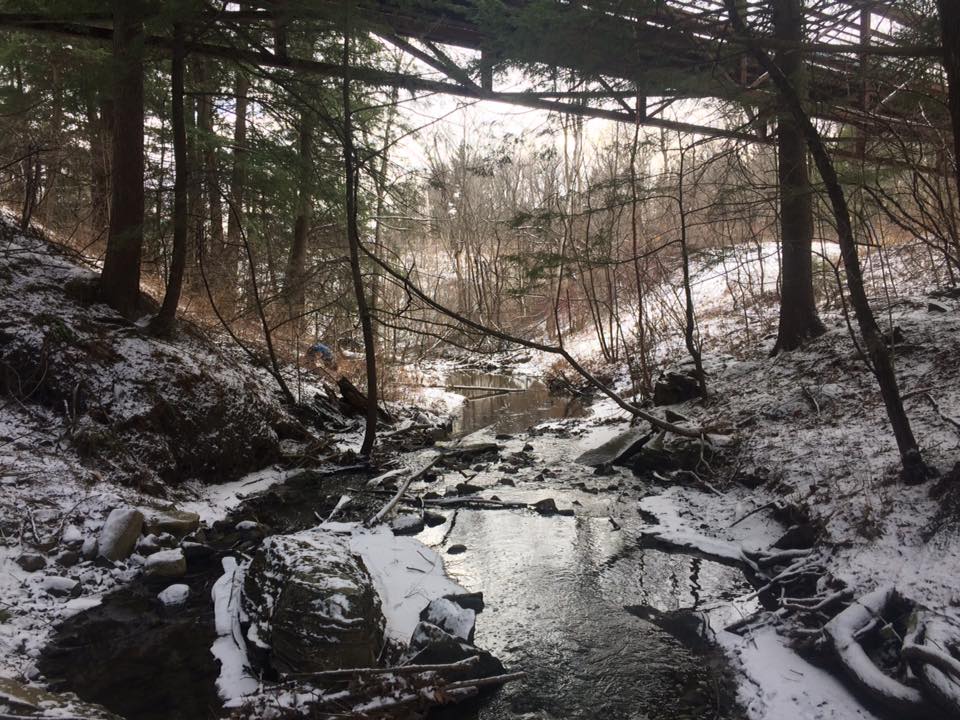
The same shot looking south. Not too different from my previous visit besides a lack of ice. (McHale, 2017)
I have noticed numerous changes at my site since the last visit. Most notably was the state of the stream. The ice had completely melted, and it appeared to be flowing faster. This is most likely due to the snow melt from numerous days of above freezing weather. The moist soil, consistent with great Eastern Hemlock growing conditions, under a dusting of snow, appeared to be more moist than normal. It was very different from the layer of dry top soil I consistently saw in the fall. I also heard consistent bird sounds for the first time. Sadly, I did not spot any birds at my site, but judging by how loud they were, there had to be some birds nearby.

The stream was flowing quite briskly! (McHale, 2017)
I also noticed that there appeared to be more downed, woody debris strewn around my site, like this hemlock branch that landed near the river’s edge.
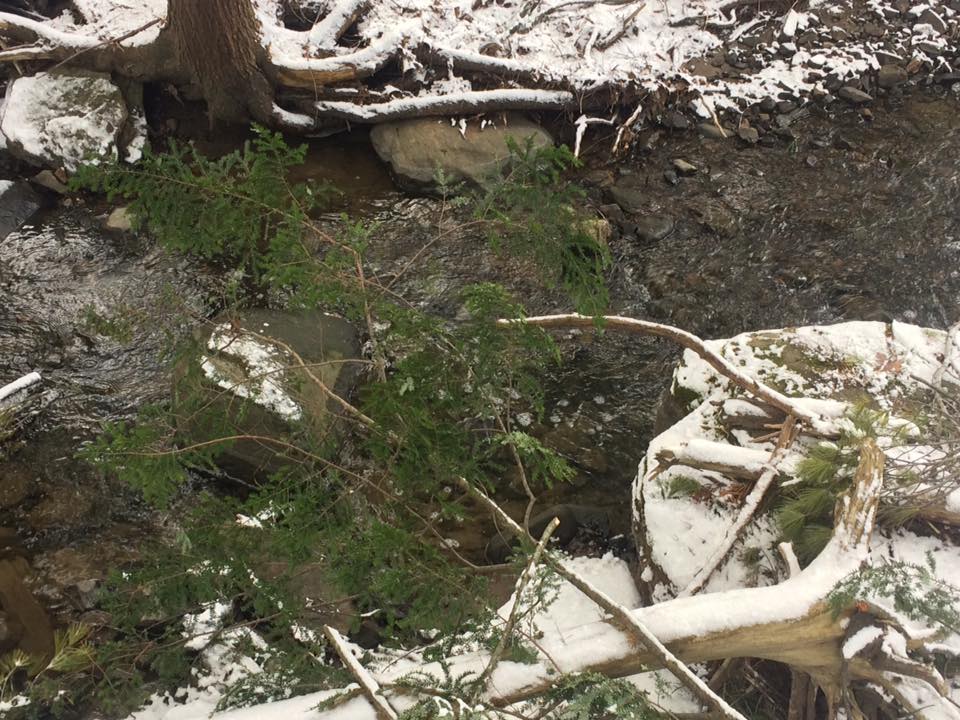
A downed Hemlock branch (McHale, 2017)
Despite the light snow covering, spring still appears to be on its way at my site. Patches of green, most notably a few ferns, were beginning to emerge from the snow. A major sign of spring that I saw was the development of defined buds on the shrubs in the understory. For instance, the glossy buckthorn buds were particularly interesting to me. I enjoyed how the buds almost look like wisps of dirty cotton.
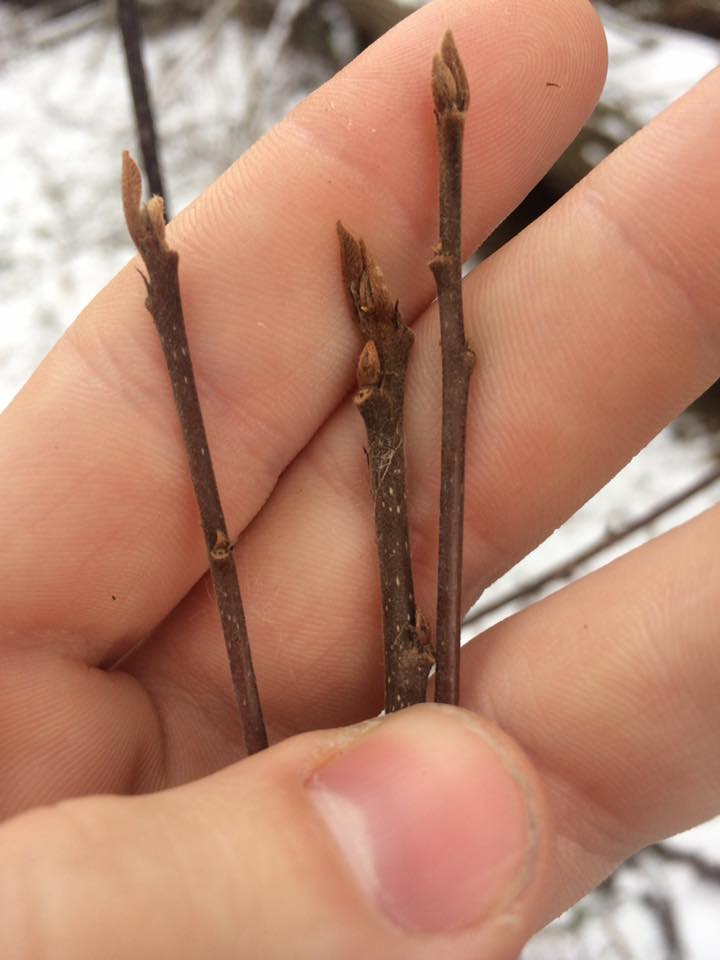
Some interesting glossy buckthorn buds (McHale, 2017)
Unfortunately, there didn’t appear to be any vernal pools in my site or in the immediate vicinity. Still, the stream water had built up behind some downed logs and rocks and formed some pools of still water. Here, I’d assume, at least some of the same processes that occur in vernal pools could happen.
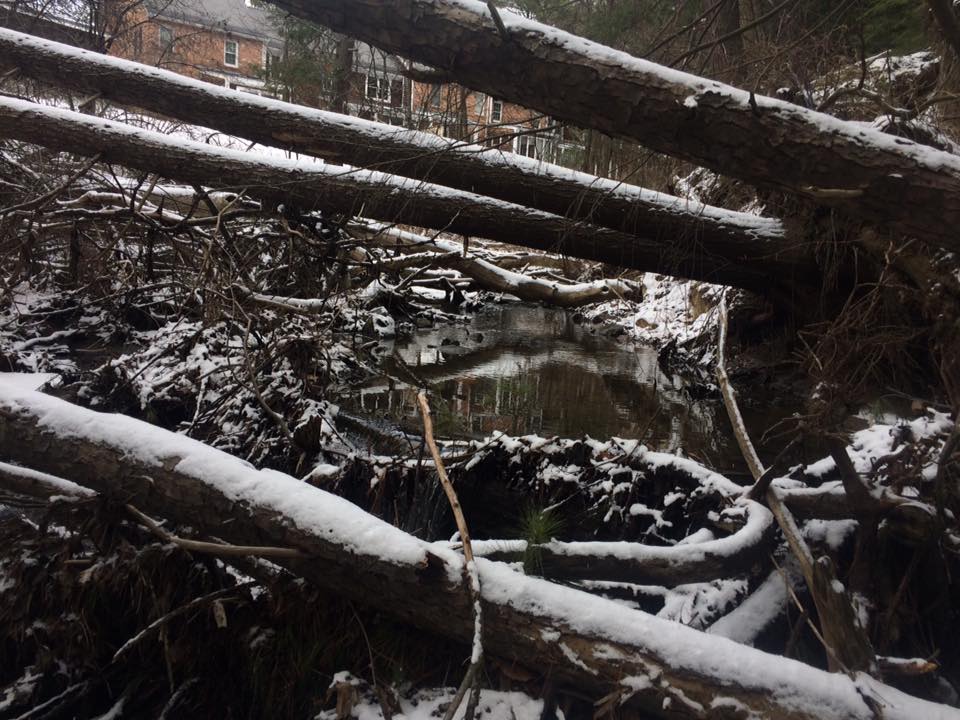
A pseudo-vernal pool, perhaps? At the very least it’s a pool 🙂 (McHale, 2017)
The Biofinder data showed that my site laid within an area of “Riparian Wildlife Connectivity”, or an area that could be used as connecting lands for terrestrial wildlife movement. My site was also considered “Priority” and “Highest Priority Surface Water and Riparian Area.” This doesn’t necessarily mean that my site is special though. All of the land bordering the tributary was considered high priority riparian area. A “Highest Priority Wildlife Crossing” was also found just south of my site across I-189.
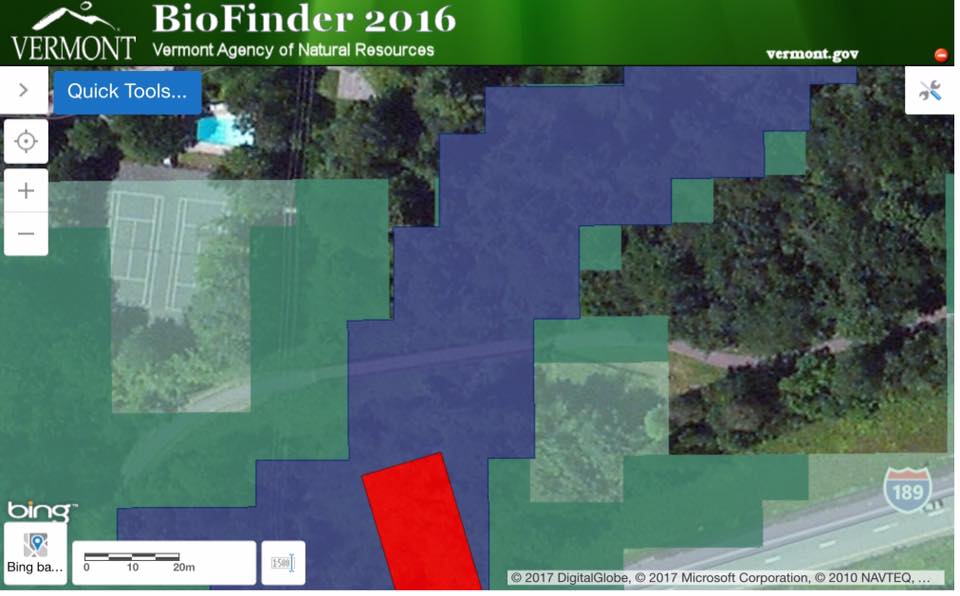
The Biofinder overlay of my site. Notice the wildlife crossing just south of it. (McHale, 2017)
As for the ecosystem classifcation, my site is almost definitively a small patch of Hemlock Forest. This is because Eastern Hemlock is the clearly dominant species, with only one large Eastern White Pine to look over the site. Near the borders of the site, as you walk away from the stream bed, it transitions into Hemlock-Northern Hardwood Forest.
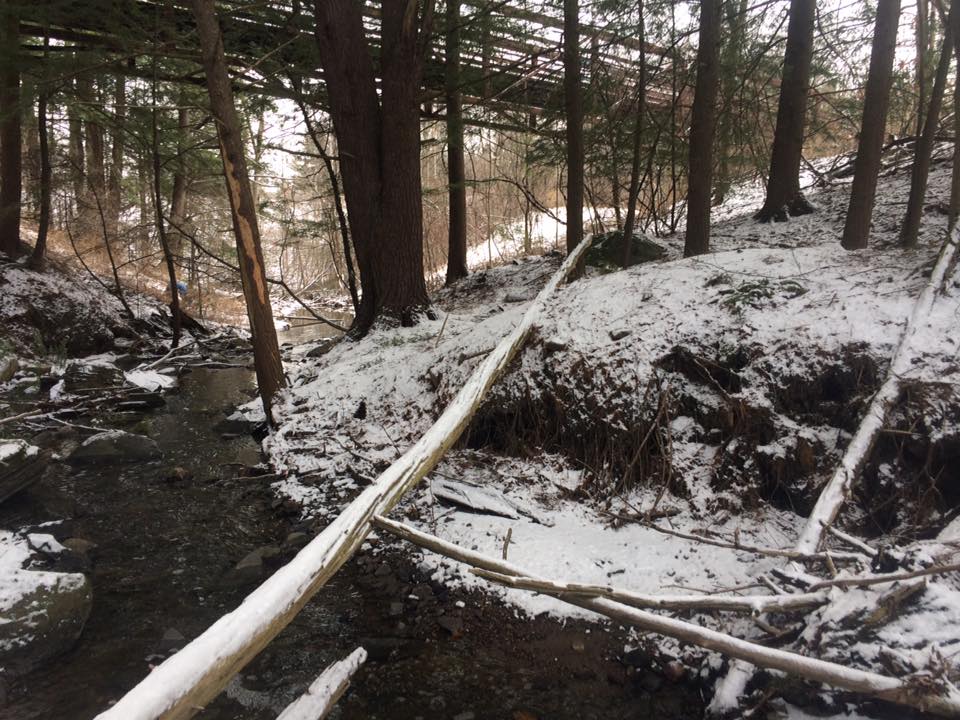
A Hemlock Forest with one feisty White Pine. (McHale, 2017)
All in all, this was a fascinating visit as always!!
